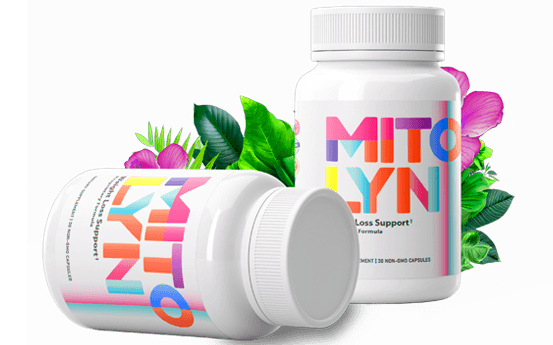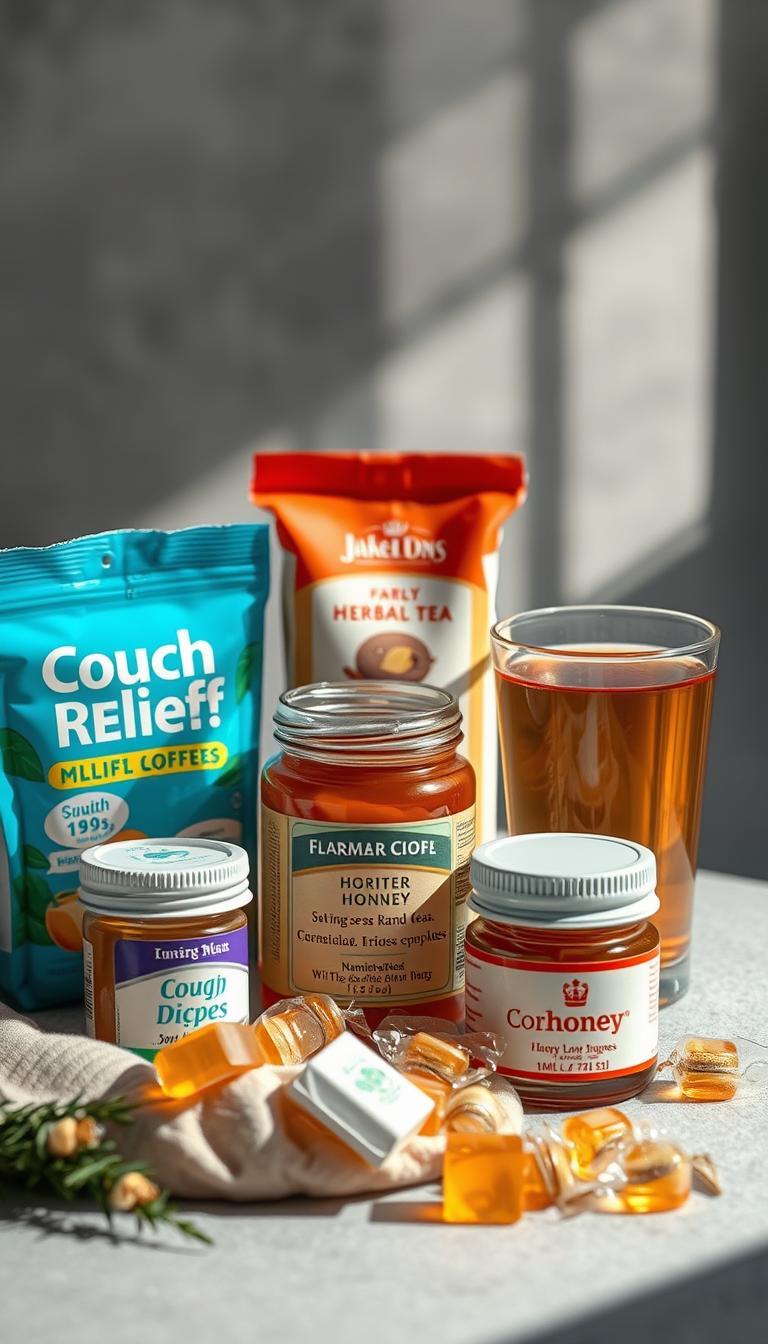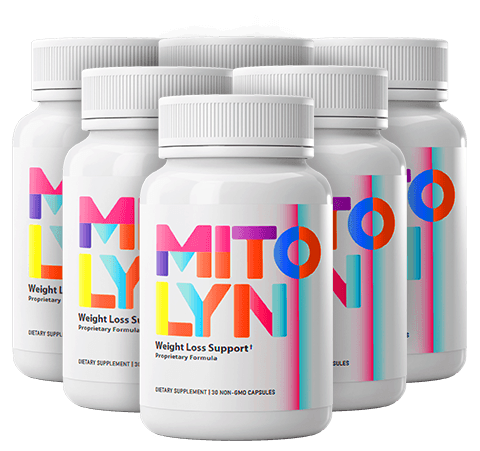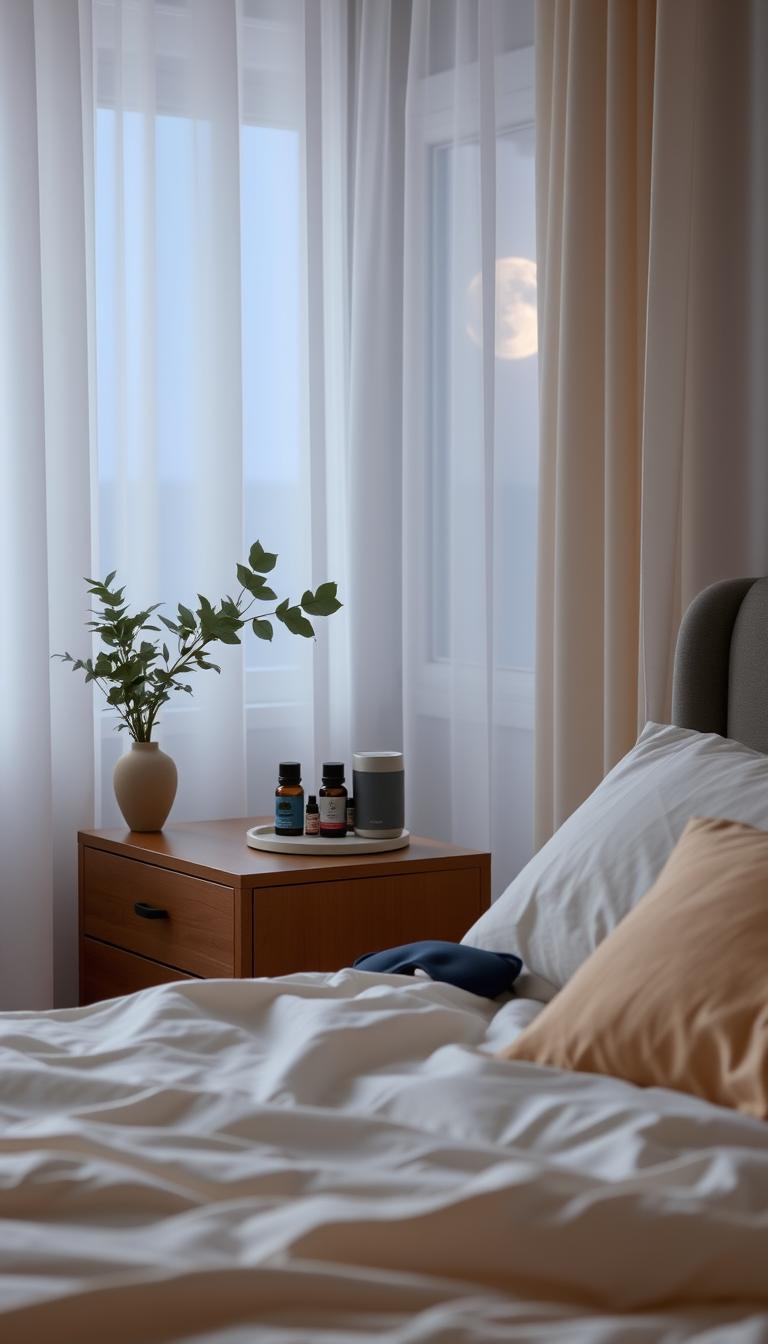
Did you know a cold compress or a 10-minute walk can stop migraine pain? Migraine relief isn’t just about medicine. It’s about combining science-backed habits with proactive care. Let’s see how small daily changes can help reduce migraine pain.
Migraine pain feels as real as an injury. But, many triggers and remedies are in your control. Effective migraine management starts with knowing how stress, hydration, and posture affect headaches. This guide shows you how to apply a cold pack and track your sleep to manage migraines.
Key Takeaways
- A cold compress can constrict blood vessels and ease migraine pain quickly.
- Hydration and caffeine moderation play key roles in headache treatment.
- Early intervention during the prodromal phase stops migraines from worsening.
- Tracking triggers in a diary helps personalize your migraine management plan.
- Combining doctor-prescribed treatments with lifestyle changes maximizes relief.
Understanding Migraines: More Than Just a Headache
Migraines are a neurological condition that is more than just a headache. They cause intense throbbing, nausea, and make light or sound too much. These migraine symptoms can really mess up your day, making it hard to work or hang out with friends.
“Migraine is a brain disorder, not just a headache,” says the American Migraine Foundation, highlighting its complex origins.
Scientists think migraine causes involve changes in the brain. These changes affect nerves and blood vessels. Changes in brain chemicals like serotonin send pain signals. Unlike tension headaches, migraines often have warning signs like mood swings or cravings (prodrome phase).
Some people see zigzag lines or other visual disturbances before the pain starts (aura).
- Pain type: Pulsating vs steady pressure
- Symptoms: Nausea, dizziness, or light sensitivity with migraines
- Duration: Migraines last 4-72 hours; tension headaches may linger longer
Four stages mark a migraine attack:
- Prodrome: Fatigue, stiff neck, or cravings (24 hours before pain)
- Aura: Visual distortions or tingling (happens in 25-30% of cases)
- Headache phase: Throbbing pain worsened by movement or light
- Postdrome: Exhaustion or confusion lasting up to a day after pain fades
Knowing these stages helps you act fast. Understanding the difference between migraine vs headache is key to getting the right help. Over 37 million Americans live with migraines, but only 48% get the right diagnosis. Learning about your pain is the first step to managing it.
Common Migraine Triggers You Should Avoid
Finding out what migraine triggers you have is crucial. Many people face similar issues. Keeping a diary of your symptoms can help figure out what bothers you the most.
Dietary Triggers to Watch For
Some foods can trigger migraines. Aged cheeses, processed meats, and MSG are common offenders. Red wine and chocolate can also cause problems. Caffeine can be tricky, as too much or too little can lead to pain.
Try an elimination diet to see which foods are your enemies. Remove one suspect at a time to find out.

Environmental Factors That Spark Migraines
- Bright or flickering lights
- Loud noises or strong smells
- Weather changes or high humidity
Wear sunglasses to block glare. Stay away from strong smells like perfume. Make your workspace lighting comfortable to avoid eye strain.
Stress and Emotional Triggers
Stress is a big migraine trigger for 70% of sufferers. It creates a cycle where pain makes you more stressed. Using stress management techniques like deep breathing or yoga can help. Try to do calm activities every day to lower your risk.
Sleep Patterns and Their Impact
Not sleeping right can mess with your body’s rhythm. Too little (less than 6 hours) or too much (more than 9 hours) sleep can lead to migraines. Stick to a regular sleep schedule and aim for quality sleep. This is part of good sleep hygiene.
Keep track of your habits to find patterns. Making small changes in what you eat, your environment, and your routine can greatly reduce migraine attacks.
Immediate Migraine Relief Strategies That Actually Work
When a migraine hits, you must act quickly. Starting treatment early stops pain from getting worse. These steps help you feel better fast.

- Cold therapy: Use an ice pack on your forehead or neck. It numbs nerves and reduces swelling for quick relief.
- OTC meds: Take acetaminophen or ibuprofen early. Add caffeine to help it work better—check the labels.
- Hydrate: Dehydration makes migraines worse. Drinking water helps ease tension and balance electrolytes.
- Rest in darkness: Lie down in a quiet, dim room. Silence and stillness help your body recover.
- Pressure points: Press the LI-4 acupressure point (between thumb and index finger). Studies show it lessens nausea during attacks.
Try heat or cold, breathing exercises, or ginger tea (steeped for 10 minutes) to find what works for you. Keep track of what helps your body. Always talk to a doctor before mixing supplements with medicines.
Medications and Treatments for Managing Migraine Pain

Medications are a key tool for managing migraine pain. From over-the-counter options to advanced therapies, the right migraine medication can help stop or prevent attacks. Here’s how to choose the best approach with your doctor.
Over-the-Counter Options
Start with common pain relievers like NSAIDs (ibuprofen, aspirin) and acetaminophen. These pain relievers block prostaglandins to reduce pain. Take them early for best results. Overuse may cause stomach irritation or other side effects.
Prescription Medications Worth Discussing With Your Doctor
Triptans (sumatriptan, zolmitriptan) target serotonin receptors to stop attacks. Anti-nausea drugs like metoclopramide address symptoms. For frequent attacks (2+ weekly), preventive treatments like beta-blockers (propranolol) or anticonvulsants (topiramate) may be prescribed. CGRP inhibitors (erenumab, ubrogeepant) block proteins linked to migraine pathways, reducing attack frequency.
New and Emerging Treatments
Emerging options expand your choices. CGRP inhibitors now include both preventive injections (e.g., galcanezumab) and acute oral forms (e.g., rimegepant). Devices like Cefaly or Spring TMS provide non-drug relief. Talk to your doctor about combining therapies for better results.
| Preventive Treatment Type | Examples | Benefits |
|---|---|---|
| CGRP inhibitors | Erenumab, Fremanezumab | Blocks CGRP to prevent attacks |
| Antiepileptics | Topiramate, valproic acid | Stabilizes nerve activity |
| Beta-blockers | Propranolol | Reduces blood vessel inflammation |
Work with your healthcare team to tailor a plan. Discuss how often you get migraines and any health conditions to pick the safest migraine medication for you.
Natural Remedies and Alternative Approaches to Migraine Relief
Many people try natural remedies when usual treatments don’t work. They look into herbal supplements and other therapies. These can help improve your health alongside medical treatments.
Herbal supplements might offer relief. Research suggests some herbs could help:
- Citron and curcumin may reduce attack frequency, according to a 2020 review.
- Chamomile and menthol could ease acute pain, but results vary.
- Magnesium supplements might help those with aura, per a 2021 study.
| Herb | Effect | Study Year |
|---|---|---|
| Peppermint Oil | Reduces pain when applied to temples | 2019 |
| Ginger | Relieves nausea and pain like medication | 2020 |
| Lavender | Cuts attack severity when inhaled | 2016 |

Other treatments like acupuncture or massage might also help. Studies show acupuncture can reduce migraine episodes when used with standard care. Try self-acupressure points like LI-4 between thumb and index finger. Yoga or mindfulness can help with stress.
Always check with your doctor before trying herbal supplements or alternative treatments. Use these with trigger tracking and lifestyle changes for the best results.
Lifestyle Changes to Reduce Migraine Frequency
Migraine prevention starts with everyday choices. Healthy habits like regular exercise and stable routines can lower how often migraines strike. Small, consistent changes to your lifestyle modifications add up over time.

“Only 10% or less of people are sensitive to specific ‘food triggers,’” says Dr. Vincent Martin. “Most migraine relief comes from broader lifestyle adjustments.”
Try these steps to build a foundation for fewer migraines:
- Sleep consistently: Set a fixed bedtime and wake time—even on weekends. Aim for 7–9 hours nightly to reset your body’s rhythm.
- Move daily: Aim for 30 minutes of regular exercise most days. Walking, swimming, or yoga release endorphins that block pain signals and ease stress.
- Eat balanced meals: Prioritize omega-3-rich foods (salmon, walnuts) and avoid skipping breakfast. A Mediterranean diet lowers migraine risk by stabilizing blood sugar and reducing inflammation.
- De-stress daily: Practice 10 minutes of deep breathing or mindfulness. Chronic stress worsens migraines, so small breaks help keep anxiety low.
- Follow SMART goals: Use the SMART framework—sleep, mindfulness, activity, routine, trigger awareness—to create habits that stick.
Even minor adjustments like short walks or a consistent bedtime can make a difference. Over time, these healthy habits build a shield against migraine triggers.
Creating Your Personal Migraine Action Plan
Managing migraines means creating a plan that works for you. Start by building a migraine management plan. This plan should include tracking, support, and clear communication with doctors.
“A comprehensive migraine treatment plan includes addressing lifestyle factors, identifying triggers, and strategies for acute treatment.” – American Migraine Foundation
Track Triggers with a Headache Diary
Use a migraine tracking tool like the Migraine Buddy or MyMigraineJournal apps. Log details daily. Note:
- Food/drink consumed
- Weather changes and sleep hours
- Stress levels and activity
- Medication effectiveness
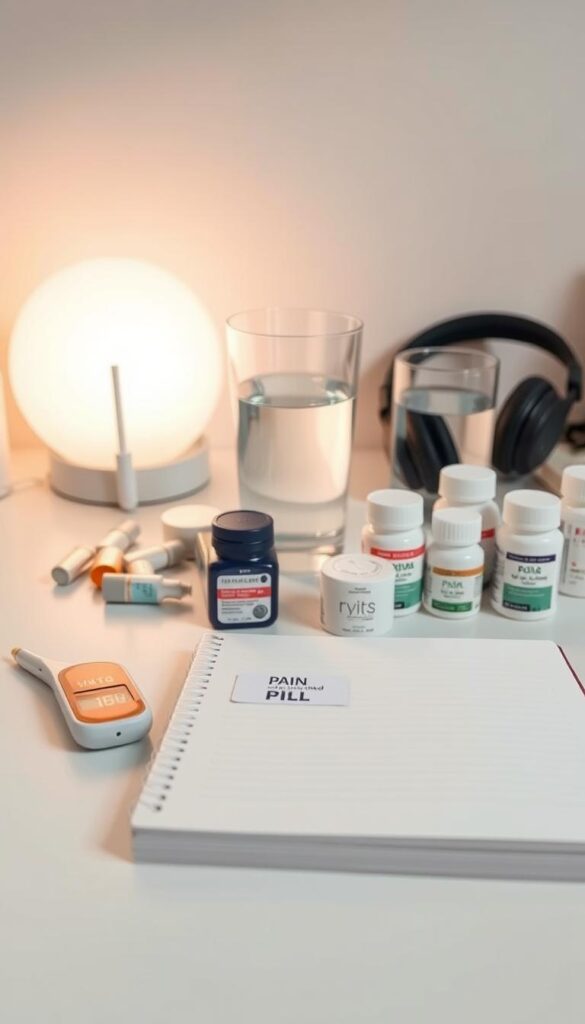
Build Your Support Network
Share your headache diary insights with loved ones. Join groups like the American Headache Society’s online forums or local support meetings. Use resources from the Migraine Trust website to educate your network.
Work with Your Doctor to Refine Your Treatment Plan
Prepare for appointments by bringing your diary and questions. Ask, “How can I prevent future attacks?” Discuss options like:
| Type | Acute Treatments | Preventive Options | Non-Medication |
|---|---|---|---|
| Acute | Triptans, NSAIDs | Beta-blockers, topiramate | Neuromodulation devices (Cefaly) |
| Behavioral | – | CBT, yoga | Mindfulness apps |
Update your treatment plan every 3 months. Ask about preventive meds if attacks occur more than 4 times a month.
When to Seek Professional Help for Your Migraines
Even with the best plans, some migraine symptoms need urgent care. Knowing when to see a migraine doctor is key to managing your health.
Warning Signs That Require Immediate Medical Attention
Go to the emergency room if you have these emergency symptoms:
- Head pain that starts suddenly like a “thunderclap”
- Headache with fever, stiff neck, or confusion
- Seizures, vision loss, or slurred speech
- Neck pain or vomiting that doesn’t ease with medication
- Head trauma followed by new migraine patterns

Finding the Right Specialist for Your Needs
If over-the-counter treatments fail, a migraine specialist can help. Neurologists focus on brain issues. Headache clinics like Premier Medical Group offer specialized care.
They accept most insurance, including workers’ compensation. This means you can get imaging tests like CT scans or MRIs. These tests help rule out serious problems.
Early action is crucial—47 million Americans suffer from migraines each year. Preventive therapy can reduce attacks by 50%. Don’t wait: a migraine doctor can help you avoid missed workdays and get back to your daily life.
The Emotional Impact of Chronic Migraines and How to Cope
Living with chronic migraines is tough. It affects your mental health and emotional wellbeing. The worry about when the next attack will happen is stressful. It can lead to depression anxiety.
More than 50% of people with chronic migraines feel depressed. And 60% feel anxious. This shows how migraines and emotional struggles often go together.

- Feelings of isolation due to the condition’s invisible nature
- Anger or guilt over missed responsibilities
- Difficulty sleeping or concentrating
Here are ways to break the cycle:
- Join a support group—online or in-person—to share experiences and reduce loneliness.
- Practice mindfulness or meditation to lower stress. Studies show these techniques reduce migraine frequency.
- Track emotional triggers in a journal. Note when stress, excitement, or sadness coincide with attacks.
- Discuss your condition openly with loved ones. Educate them about how migraines affect daily life.
| Emotional Challenges | Action Steps |
|---|---|
| Feelings of isolation | Join support groups or online forums |
| Stress-induced attacks | Try gammaCore, an FDA-cleared device for stress-related migraine relief |
| Depression anxiety | Seek counseling or cognitive-behavioral therapy |
Your emotional wellbeing is important. Small steps like daily relaxation or sharing your struggles can help. Remember, your health journey is valid, and help is available.
Conclusion: Your Path Forward to a Life With Fewer Migraines
Your journey to fewer migraines starts with small steps. Everyone’s fight against migraines is different. But, there are ways to make life better.
Start by tracking what triggers your migraines. Change your habits and try new treatments like supplements and chiropractic care. Cleveland Chiropractic offers a special approach. They focus on the cause, not just the symptoms.
Begin with easy changes. Cut down on caffeine and try yoga or meditation. Also, keep a regular sleep schedule. Magnesium and riboflavin supplements might help, but talk to a doctor first.
Chiropractic care, like upper cervical adjustments, can also help. Use a migraine journal to track your patterns. Share this with your healthcare team.
Remember, getting better takes time. Many people find relief by mixing different treatments. Cleveland’s patients see fewer headaches and better sleep with personalized care.
Even small actions, like a 10-minute walk or using peppermint oil, can make a big difference. Your journey to fewer migraines needs patience. But, with the right help, you can manage your pain.
FAQ
What are migraines and how are they different from regular headaches?
Migraines are complex events in the brain. They cause severe pain on one side and can make you feel sick. Unlike regular headaches, migraines change how the brain works and affect neurotransmitters.
What are some common triggers for migraine attacks?
Foods like aged cheeses and processed meats can trigger migraines. So can alcohol and artificial sweeteners. Environmental factors, stress, and sleep issues also play a role.
How can I find immediate relief during a migraine attack?
Quick action is key. Try to make your space dark and quiet. Use cold or heat packs, drink water, and breathe deeply. Find what works best for you.
What medications should I discuss with my healthcare provider for migraine management?
Talk to your doctor about over-the-counter NSAIDs and acetaminophen. Prescription options like triptans and beta-blockers are also good to discuss. Share your migraine details to find the right treatment.
Are there natural remedies that can help with migraines?
Yes, magnesium, riboflavin, CoQ10, and feverfew are backed by research. Acupuncture, massage, and mindfulness can also help.
What lifestyle changes can I implement to reduce migraine frequency?
Regular sleep, exercise, and hydration are key. Avoid triggers and manage stress. These steps can reduce migraine frequency and severity over time.
How can I effectively track my migraines and their triggers?
Use a migraine journal. Note weather, food, sleep, and emotions. This helps you and your doctor find patterns and create a treatment plan.
When should I seek professional medical help for my migraines?
See a doctor for sudden severe headaches, headaches with fever, or new symptoms. If your migraines are often or severe, you may need a specialist.
What emotional impacts can chronic migraines have?
Chronic migraines can cause anxiety, depression, and isolation. Recognize these effects and seek help through therapy, mindfulness, or support groups.








